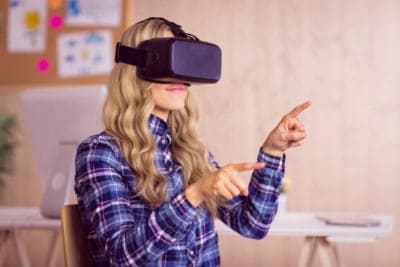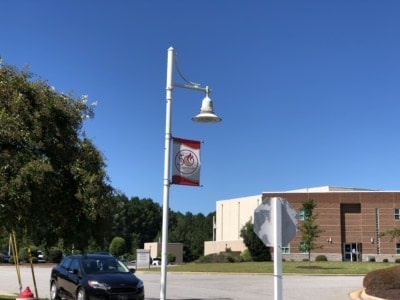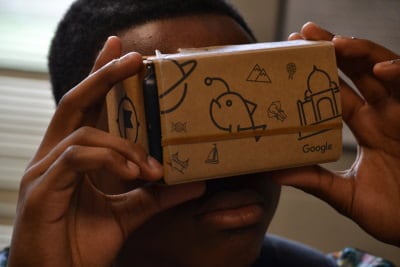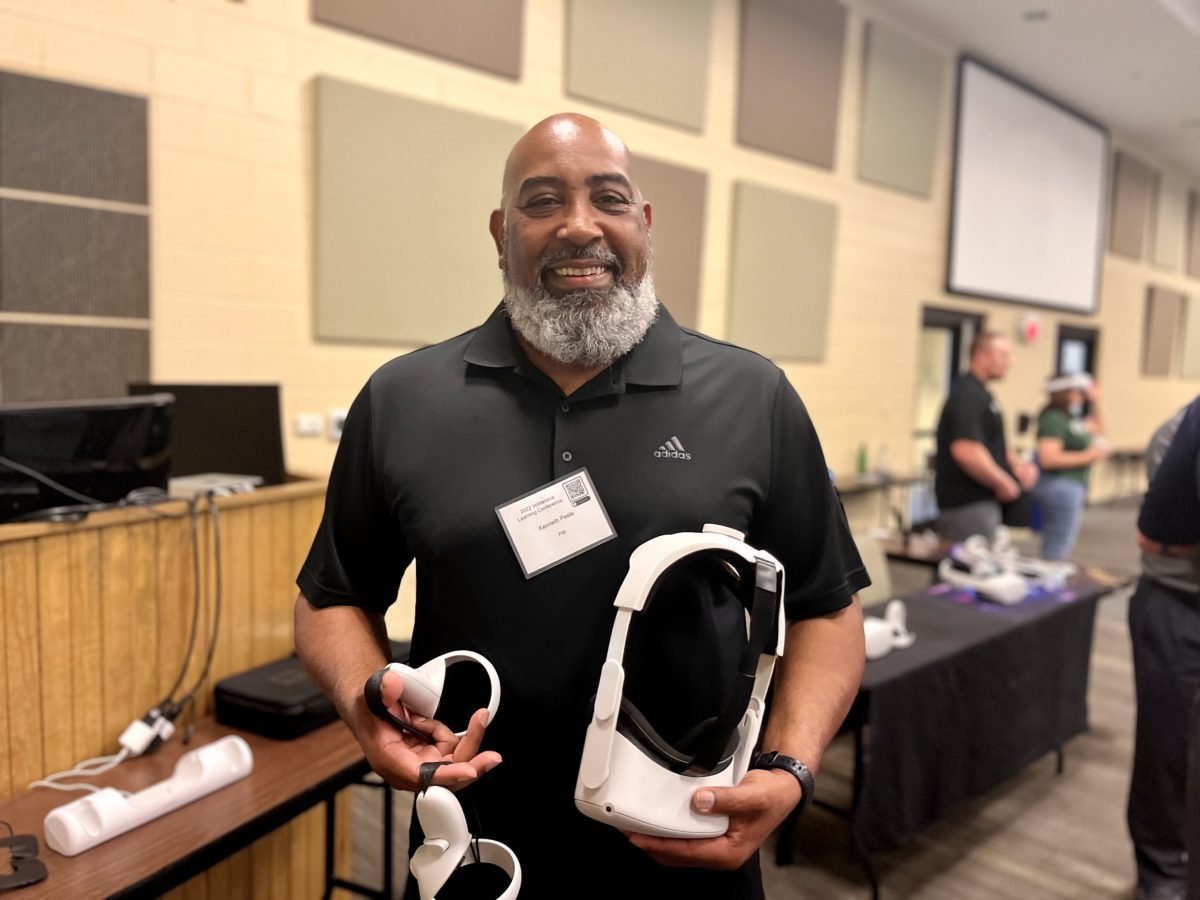

Share this story
- Virtual reality technology can help students learn and train in virtual environments – exposing them to more careers and offering better, safer training, the N.C. Community College System Director of Online Learning said.
- "Career exploration is important because a lot of individuals don't know what they don't know when it comes to career opportunities. Through our very immersive and interactive simulation, an individual can experience up to 23 different skilled-trade jobs."
|
|
What comes to mind when you think of virtual reality (VR)? For some, it’s Facebook’s Meta, realistic gaming, or a scene out of a science fiction movie.
At the N.C. Community College System (NCCCS), VR technology also represents the potential for students to learn and train in virtual environments. That training potentially increases confidence, proficiency, and exposure to careers while also reducing the time and cost of physical training.
The system hosted a conference in May 2022 to share immersive learning technology with Career and Technical Education (CTE) faculty at community colleges – with hopes of showing the potential VR has to expand instructional methods for the future workforce in an exciting way. The 2023 conference, planned for April 3-5 at the Caraway Conference Center, will focus on health care, business information, and law enforcement.
Some colleges, like South Piedmont Community College, use VR to help more students experience a form of study abroad. Pitt Community College used the technology to create an online tour of campus. Other colleges use VR to expose students to multiple career opportunities in one place or for training ahead of graduation.
EdNC spoke with Lane Freeman, NCCCS Director of Online Learning, and Transfr VR employees Charlie Bradley, with regional government relations, and David Wilkinson, senior enterprise sales and workforce advocate, to learn more about the technology and its potential. Transfr works to build classroom-to-career pathways through immersive, hands-on VR training.
EdNC edited this interview for length and clarity.
EdNC: What is VR used for? What are some of its most common uses, particularly among schools and community colleges?
Wilkinson: K-12, community colleges, and the North Carolina Department of Public Safety use VR right now for the purpose of exposing individuals to career opportunities in the skilled-trades world. The two important criteria for us are: are these in-demand jobs, and will they provide a sustainable lifestyle?
When we focus on areas to build content, we focus on areas like construction, advanced manufacturing, culinary, hospitality and tourism, aviation fundamentals, etc. At Transfr, we focus on two areas – career exploration and our virtual training facility. Career exploration is important because a lot of individuals don’t know what they don’t know when it comes to career opportunities. Through our very immersive and interactive simulation, an individual can experience up to 23 different skilled-trade jobs. Our virtual training facility gives an individual the ability to upskill and learn fundamental job or training skills. That training produces a much safer work environment and also drastically cuts down on consumables used up in programs.
Pamlico Community College is one of the community colleges that is going to be doing training in the correctional facilities. In correctional facilities, certain tools aren’t allowed, period. However, virtually, people can pick up wrenches and saws and hammers. It just gives them the ability to learn without actually handling the tools.
Freeman: Last year at our conference we focused on automotive, advanced manufacturing, and construction. Now we’re also looking at health care and public safety. I think the impact that VR can have in the Great 58 is where we can start planting these seeds. We do hear a lot about the apprehension about how much it costs. It does have its cost, but it also has a continued return on investment.
EdNC: How else is North Carolina already using VR?
Wilkinson: Our biggest implementation so far in North Carolina is with Charlotte Mecklenburg Schools. They purchased 120 of our all-access headsets for their summer accelerator program. Now they’re in the process of having us help them get this same technology into their CTE programs, as well as into the middle schools for career exploration. Union County Public Schools and Iredell-Statesville have ordered multiple sets of headsets as well. There are a few community colleges talking with us about using VR for career exploration, too.
Bradley: Earlier this school year, I met with a number of Department of Public Instruction leaders. Every single one of them was just very complimentary of our technology and seeing how this could really change lives.
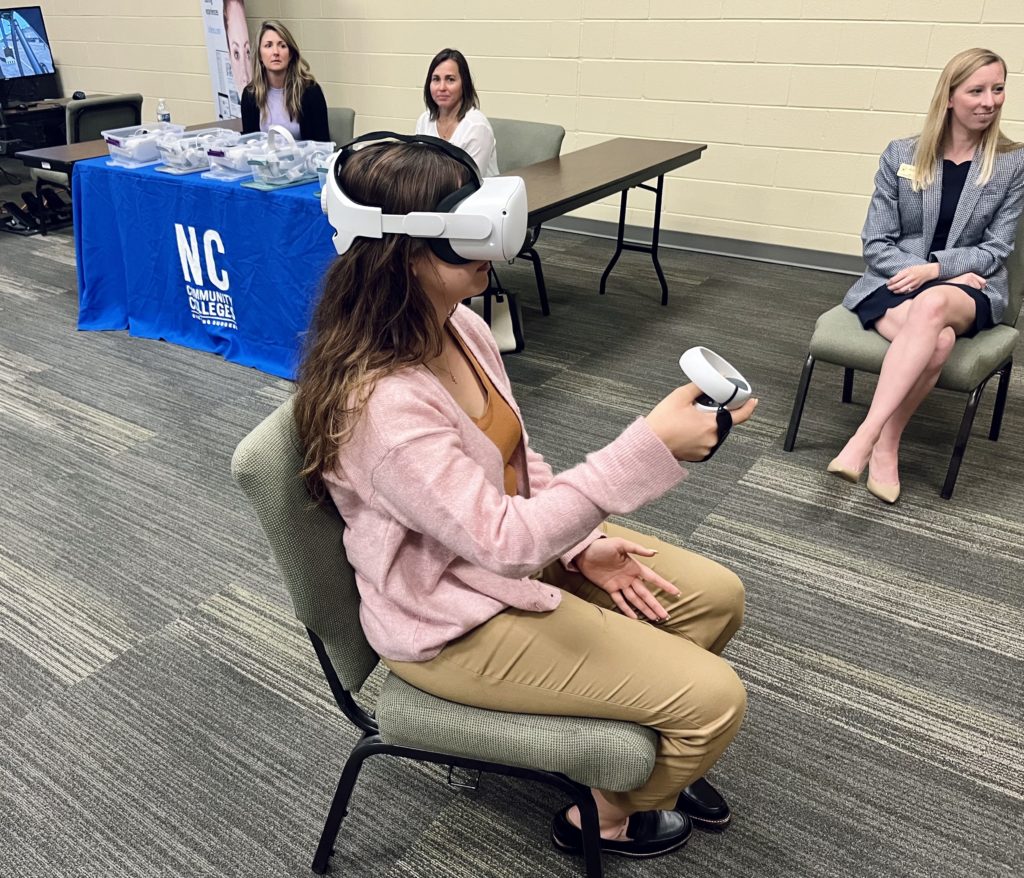

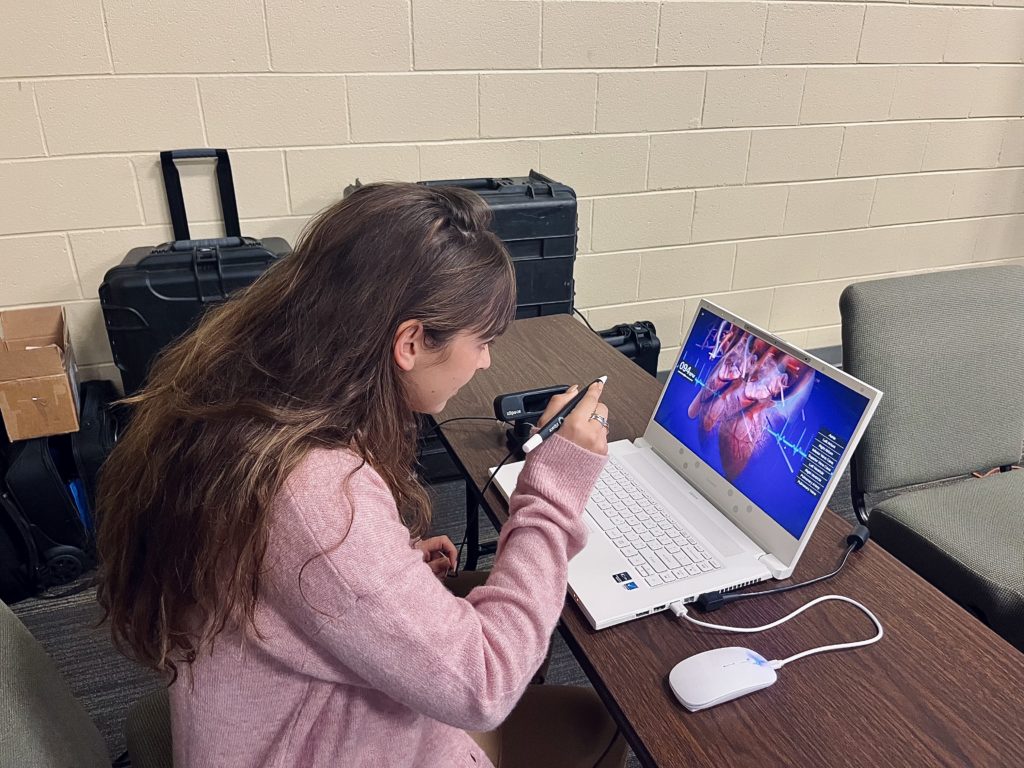

EdNC: Where do you see the biggest opportunities for VR to help innovate in community colleges?
Wilkinson: One of the areas I see as the largest is simply the ability to quickly and efficiently upskill individuals. Our product is not built to replace an instructor. It’s meant to complement instruction work in a lab environment. However, if you’re in a rural location in North Carolina, where it is difficult or impossible to find an automotive instructor or a construction instructor, this technology will do a very good job in helping individuals get a very good understanding of that skill set.
There’s just so many different ways to expand the technology. And the truth is, we’re still at the forefront of this technology. For us, engagement with our community and technical college partners is a big deal. As we build and expand and find where we can be the most effective, we need that feedback.
Bradley: In North Carolina, a lot of industries need workers. Specifically, we’re seeing this renaissance of sorts in the manufacturing industry with VinFast, Toyota, and biomedical manufacturing coming to the state. We can be a part of that solution to hopefully get individuals interested in manufacturing and to hopefully be that solution for workforce development needs throughout the entire state.
Freeman: At the community college level, for the past 5-10 years part of my role has been how can we transition courses from face-to-face to online? CTE was always one of those areas that was really hard for me to make a good argument for. When I started seeing virtual reality, I started seeing that potential.
COVID also helped push people online, so I think we had people’s minds open a little bit to what is possible. At the (immersive learning) conference last year, a lot of people never put VR headsets on before. When they walked away, they were really energized by it and they were thinking about how they could implement it and they came back with a buzz. I just want to continue that buzz. And how is it going to continue to grow? Then for our faculty, colleges, and legislators and everyone not to think VR is crazy anymore when they see it. That they think, ‘Okay, finally, we’ve got a way to fix this problem that we have.’
EdNC: How do you justify the high upfront costs and work with interested clients to find a starting point?
Wilkinson: Actually very rarely does high cost come up. Very, very rarely. Because I think people investing see the benefits. I think price comes up when someone isn’t really sure if it’s going to fit their needs. Once they see what Transfr can do, they’re interested. Also, our pricing model is a headset model, not a student model. So a school district or a community college purchases five headsets — on an expensive end it would be $25,000; on the low end it would be about $10,000. But with those five headsets, hundreds and hundreds and hundreds of students can use that technology.
Bradley: You could purchase one headset and have a million people go through it if that’s what your community college can do.
Click here to learn more about various immersive learning technologies.



